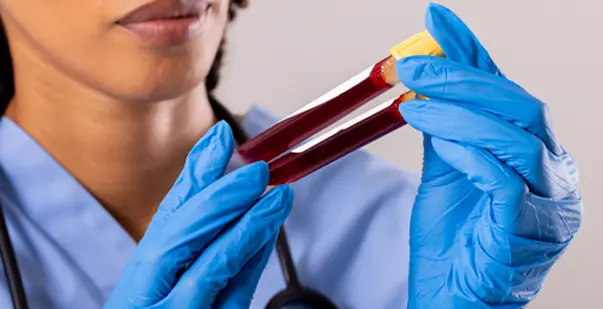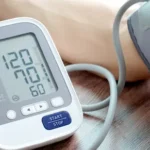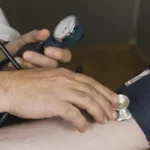
- Last Updated On: August 20, 2024
Common Risks of Bloodborne Pathogen Exposure for Healthcare Workers
Healthcare workers stay at the forefront of patient care. It is extremely common for them to face various occupational hazards. According to the latest reports by the World Health Organization, over 3 million healthcare workers worldwide come in contact with some sort of hazardous bloodborne pathogens. Bloodborne pathogens like hepatitis A, B and C are microorganisms that can cause infectious diseases. Due to their nature of work, healthcare workers are regularly exposed to potentially infectious materials.
Understanding the common risks of bloodborne pathogens exposure for healthcare workers is important to maintain a safe working environment. In this comprehensive guide, we will discuss the primary risks associated with bloodborne pathogens along with safety measures and precautions. So let’s begin!
Understanding Bloodborne Pathogens
Bloodborne pathogens are infectious microorganisms present in blood that can cause diseases in humans. Healthcare workers are at a higher risk of exposure due to the nature of their work. To eliminate these risks, understand what bloodborne pathogens are.
Common Bloodborne Pathogens:
- HIV (Human Immunodeficiency Virus): Causes AIDS and weakens the immune system.
- HBV (Hepatitis B Virus): Affects the liver and can lead to chronic liver disease or liver cancer.
- HCV (Hepatitis C Virus): Also affects the liver and can result in chronic infection and liver damage.
Transmission Methods:
- Needlestick Injuries: Accidental punctures by needles that are contaminated with infected blood.
- Cuts from Other Sharp Instruments: Injuries from scalpels, broken glass, or other sharp objects contaminated with infected blood.
- Contact with Broken Skin: Exposure to infected blood through cuts, abrasions, or dermatitis.
- Mucous Membrane Exposure: Contact with infected blood through the eyes, nose, or mouth.
High-Risk Procedures:
- Blood Draws and Injections: Handling needles and syringes.
- Surgical Procedures: Involving sharp instruments and potential for blood exposure.
- Handling Contaminated Waste: Disposing of or cleaning materials that have been in contact with blood.
Preventative Measures:
- Use of Personal Protective Equipment (PPE): Gloves, gowns, masks, and eye protection.
- Proper Disposal of Sharps: Using puncture-proof containers for needles and other sharp objects.
- Vaccinations: Immunization against hepatitis B.
- Hand Hygiene: Regular and thorough hand washing.
- Training and Education: Ongoing education on bloodborne pathogen certification,risks and prevention.
Common Risks For Healthcare Workers
Healthcare workers face occupational hazards on a daily basis. To recognize and eliminate such factors, it is important to properly identify the common risks. Below mentioned are a few common risks that most healthcare workers deal with in the workplace:
- Needlestick Injuries: Accidental punctures from needles used on patients pose a significant risk of infection transmission.
- Sharp Object Injuries: Cuts or punctures from scalpels or broken glass often get contaminated with infectious material.
- Exposure to Blood and Body Fluids: Healthcare workers often come in direct contact with blood or other potentially infectious materials through broken skin or mucous membranes.
- Inadequate Use of Personal Protective Equipment (PPE): Failure to properly use gloves, gowns, masks, and eye protection increases the risk of exposure.
- Improper Disposal of Contaminated Materials: Incorrect handling or disposal of sharps and other contaminated waste can lead to accidental injuries and infections.
- High-Risk Procedures: Tasks such as drawing blood, administering injections, and performing surgeries involve direct contact with blood and body fluids.
- Insufficient Training and Awareness: Lack of adequate training on bloodborne pathogens and proper safety protocols leads to increased exposure risk.
- Workplace Accidents: Slips, trips, and falls in environments where bloodborne pathogens are present can lead to accidental exposure.
- Inadequate Hand Hygiene: Failure to wash hands thoroughly and frequently can facilitate the spread of infections.
Importance Of Proper Training And Protocols
In the healthcare domain, proper training is crucial for minimizing the risk of bloodborne pathogens. It is important to ensure that healthcare workers are updated and equipped to handle these hazards to protect their health. These are the reasons why following proper protocols and attending trainings are important:
- Enhanced Safety: Comprehensive training ensures healthcare workers understand how to protect themselves and others from exposure to bloodborne pathogens.
- Increased Awareness: Regular education on risks and preventive measures keeps safety top of mind.
- Proper Use of PPE: Training on the correct usage of personal protective equipment (PPE) reduces the risk of exposure.
- Effective Waste Disposal: Protocols for disposing of contaminated materials prevent accidental injuries and the spread of infections.
- Standardized Procedures: Consistent practices for high-risk tasks, such as blood draws and injections, minimize the chance of accidental exposure.
- Emergency Preparedness: Training prepares workers to respond effectively to exposure incidents. This reduces potential harm.
- Compliance with Regulations: Adhering to OSHA and other regulatory guidelines helps avoid legal repercussions and ensures a safe working environment.
- Reduction in Workplace Accidents: Educated workers are less likely to engage in behaviors that lead to slips, trips, and falls in hazardous areas.
- Improved Hand Hygiene: Emphasizing proper hand-washing techniques significantly lowers the risk of infection transmission.
- Continuous Improvement: Ongoing training and protocol updates ensure that healthcare practices evolve with new information and technologies. This helps maintain high safety standards.
Conclusion
Understanding the common risks of bloodborne pathogens exposure for healthcare workers help create a safer work environment. But to make that possible, it is important to enroll for proper training, follow the established protocols and commit to safety standards. To encourage a safer, healthier workplace for all, the key is to believe in the power of constant education and vigilance.
Read More:
Free OSHA Bloodborne Pathogen Training: Does It Really Exist?
Medical Emergencies That Require Your Preparedness




